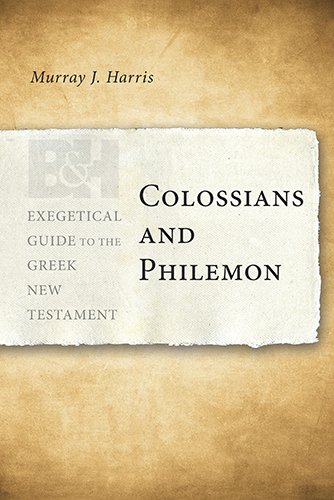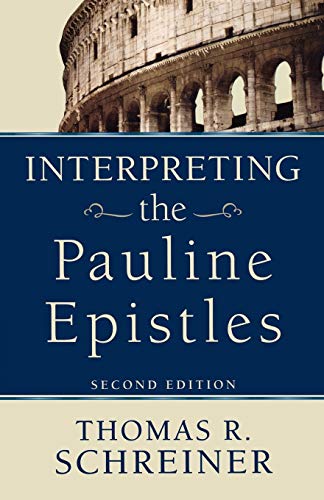After several decades the debate on the Son of Man (SM) is still going strong, with no sign of a solution that will be acceptable to all. This debate cuts across three fields of research: OT (especially Daniel), intertestamental literature (especially 1 Enoch and IV Ezra) and the NT (especially the synoptic gospels). The many varieties of standpoint can be subsumed under two main constellations. On the one hand, there is the view that behind the Greek ho hyios tou anthrōpou stands an Aramaic bar (e)nash(a) which, as shown by later texts (e.g. Mishnah), sometimes took the place of the first person of the personal pronoun. For this view (called the Circumlocutional Theory, originally propounded by G. Vermes, but now defended in modified form especially by B. Lindars and M. Casey) Jesus used the ‘Son of Man’ expression instead of ‘I’ on account of some special reason—modesty, fear, etc.—without any connection whatsoever to any previously existing SM concept, or even the OT ben adam or the Danielic bar enash. On the opposite side is the view that insists that Jesus’ use of the term was in deliberate relation to the Danielic bar enash which in Jewish thinking (e.g. 1 Enoch, IV Ezra) had led to the expectation of an apocalyptic figure known as the Son of Man.
Hare’s book belongs in the first camp. Despairing of the fruitfulness of the efforts of those who deny the existence of an SM concept in pre-Christian Judaism, Hare tries to approach the subject in different ways in order to prove what he considers his camp partners have failed to prove. Instead of starting, as is usual, with the Danielic (and OT) material and then working his way through the apocalyptic literature to establish what was there at the time of Jesus’ appearance, he starts the other way round, working his way back to Jesus.
In his Introduction (pp. 1–27) Hare proposes to develop R. Leivestad’s thesis, who denies the existence of an apocalyptic SM. He plays down the supernatural characteristics of the Enochian SM, identifying him with Enoch (without argument) (p. 16). He ignores the evidence of the lxx on Daniel 7:13 (pp. 17–18) and misses the point of r. Joshuah ben Levi’s statement on the Messiah’s coming riding on an ass (p. 19). He criticizes Vermes and Casey for ‘beginning with the solution and arranging the evidence to fit’, thus ‘begging the question’ (p. 25). This leaves him free to present his own method, which is the one which ‘begs the fewest questions’, though he admits that he ‘hopes to demonstrate the correctness of a specific thesis’ (p. 26). His approach is to start with the interpretation of SM in Greek documents, and work his way back to the hypothetical Greek and the Aramaic of the gospels, to Jesus—if possible.
Chapter 2, entitled ‘From Ignatius to Barth’ (pp. 29–45), ought really to be entitled ‘From Barth to Ignatius’, and indicates the unhistorical method which Hare has chosen to apply. His interest here is to show that in the (systematic) theological tradition of the church SM has been generally interpreted as a term reflecting the humanity of Jesus. Hence there is no reason to understand the NT as a title with supernatural or pre-existent connotations.
In chapter 3, on ‘Luke-Acts’ (pp. 47–78), Hare bypasses the meaning and connotations which SM had in Judaism in order to discover what Luke made of it—as if Luke had inherited a term empty of content! He prefers compositional rather than redactional criticism, because the former more clearly relates the various parts to the whole message. He discusses a number of SM texts, coming always unerringly to the conclusion that Luke does not have a pre-existent, apocalyptic SM, but uses the term idiomatically as ‘I’. The important text of Luke 5:24 is explained away along lines which have already been refuted (e.g. by Caragounis, The Son of Man, 1986, pp. 179–190) but of which Hare does not show any awareness.
Chapter 4, on ‘John’ (pp. 79–111), concludes that SM ‘refers to the incarnational existence of the Logos’ (p. 111).
The following (longest) chapter is devoted to Matthew (pp. 113–182). His remarks and conclusions with each one of the sayings are patently uniform: SM denotes Jesus’ humanity. Even the passion sayings tell of nothing other than the humanity of Jesus. Thus, on Matthew 20:18f. he comments, ‘Nothing need be added here to what has been said concerning the earlier passion predictions. In all these passages “the Son of man” designates a unique human being who nonetheless shares with other human beings the necessity of dying’! This is quite desperate and makes no sense in the light of Matthew’s concerns.
In Chapter 6, on Mark (pp. 183–211), in which Hare analyses 13 SM sayings, he comes, as usual, to the same conclusion, viz. that Mark knows nothing of an apocalyptic, titular use of SM. Already in the first saying (Mk. 2:10) which he discusses, he postulates that Mark cannot have intended another meaning than Matthew and Luke. Thus, the saying is watered down to making Jesus simply the mouthpiece of God’s forgiveness (p. 187), despite the fact that Mark makes Jesus the subject of the verb. He dismisses Mark 10:45 with a few words about the ‘glory-hungry Christians … symbolized by James and John’ without coming to terms with the real issue—the saying as applying to Jesus—and without taking notice of Stuhlmacher’s arguments.
On pages 213–256, entitled ‘The Pregospel Tradition’, Hare doubts that the ‘conglomerate of traditions’ designated as Q had an SM Christology. On the problem of forgiveness of blasphemy against the SM (Mt. 12:32) he has failed to consult Lövestam’s detailed examination Spiritus Blasphemia, and misunderstands the force of the saying. A la Casey he thinks that the suffering SM sayings just describe Jesus as a human being liable to pain and death, but he has some sensible criticisms against Vermes, Lindars and Casey (pp. 244–255). However, he recognizes the speculative nature of his conclusions, e.g. that ‘the Greek tradents betray no awareness of an apocalyptic myth concerning the heavenly Son of Man’ and that bar enasha ‘was capable of functioning in some contexts as a modesty idiom’, when he admits that they are ‘based on nothing stronger than inference’ (p. 256), but that this has fewer inferences than the opposing view.
Hare’s final chapter is concerned with ‘Jesus’ (pp. 257–282). Even here his position is that in the Aramaic-speaking community bar enasha had no apocalyptic content. It was purely denotative, not connotative. It communicated no content about Jesus’ status. One may wonder why it was then used? Hare’s principle then is to accept SM sayings as genuine if they can be understood as non-apocalyptic. Thus, since Matthew 11:19 = Luke 7:34, the saying on gluttony is not loaded theologically, it is genuine. The same applies to a few other sayings. The condition is always that the saying is not perceived to have apocalyptic or titular overtones (e.g.Lk. 12:8f.; Mt. 8:20; Lk. 11:30; Mk. 2:10). This is reminiscent of Leivestad. Hare does not appear to be aware that in these syllogisms he has had predecessors (e.g. J. Knox) who have been refuted repeatedly long ago. The sayings accepted as genuine reveal modesty, reserve, etc.—even Jesus’ claim to forgive sins!
Hare tries to give the impression that his approach to the SM problem is free from presuppositions that could prejudice his results. He therefore starts with Barth and works his way back to Jesus. He thus claims to approach every evangelist independently of his predecessors and thus without any pre-understanding. To the present reviewer this is methodologically a false approach. The SM question is a historical problem. History means continuity. When Luke, for example, writes about the SM—especially since Hare assumes an earlier tradition about this way of speaking on the part of Jesus—he does not do it in a vacuum. As Hare himself shows, there was an SM tradition and Luke cannot have been unaffected by it. When he received that term it was charged with some content. If, for the sake of argument, the content was of a transcendental, apocalyptic nature, then Hare has built his castle upon the sand.
Secondly, Hare starts with what he considers to be non-apocalyptic interpretations of the SM in the history of the church, and then tries to impose such an understanding on Luke, John, Matthew and Mark, thus prejudicing his whole argumentation. He has strained the texts and their legitimate exegesis in order to get them to fit his interpretation.
Thirdly, Hare has been very selective in the kind of works he debates with. He seems to have studiously avoided taking issue with the opposite interpretation, and many important problems have been ‘solved’ without telling the reader that there is more to be said.
Fourthly, if Hare had started at the right end, viz. Daniel and the Jewish pre-Jesus tradition (the present reviewer is now joined by J.J. Collins in his recent SNTS lecture (August 1991) on the SM in first-century Judaism), the result would have been very different. Indeed, in the SM research, the OT, and Daniel in particular, is the right point of departure. This Jewish tradition was known to Jesus and the evangelists, it was their heritage, and therefore what they meant by SM must be interpreted in the light of that tradition, and not in the light of Barth’s dogmatics.
Chrys C. Caragounis







